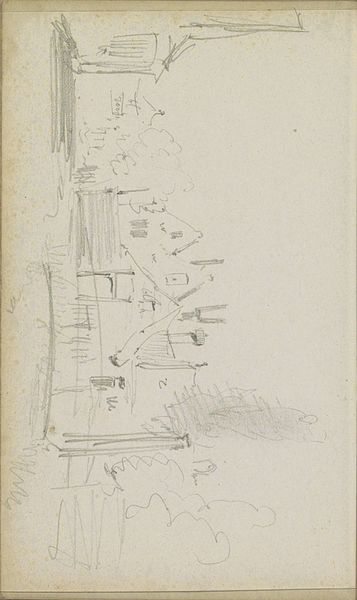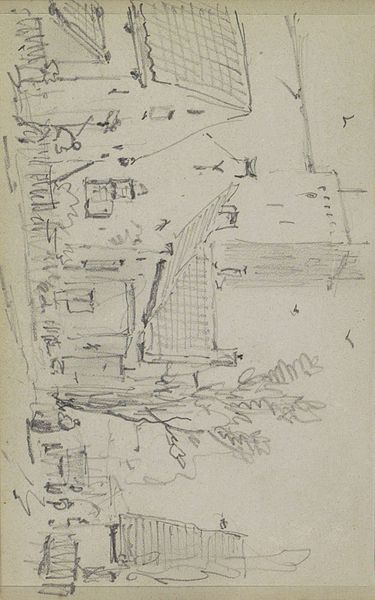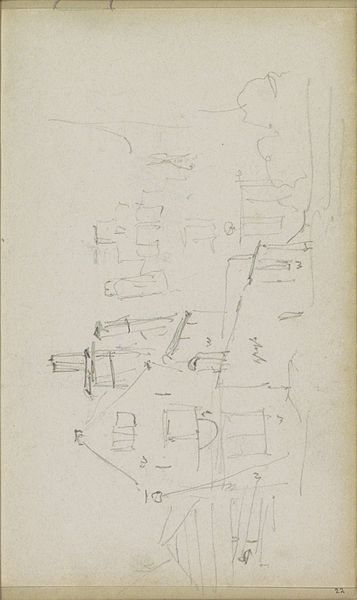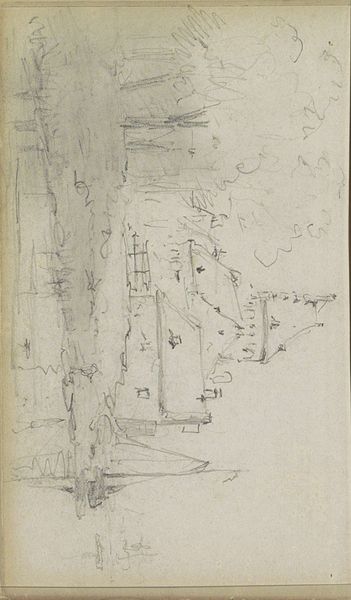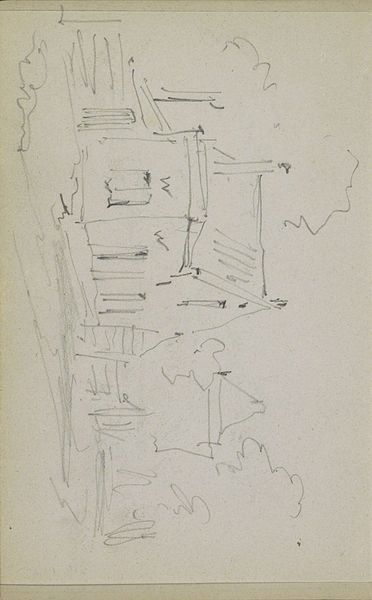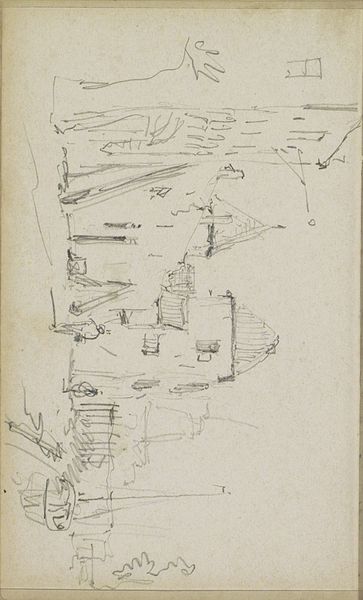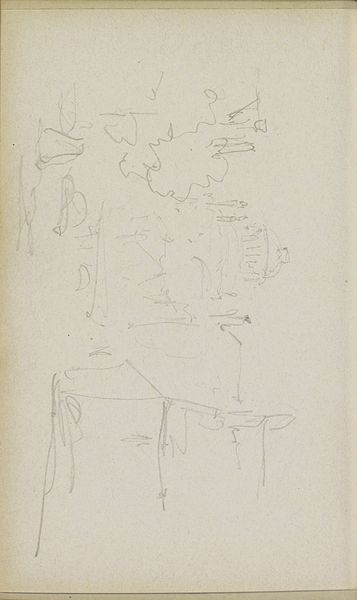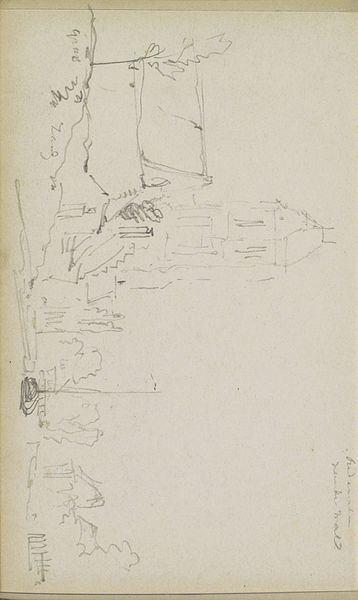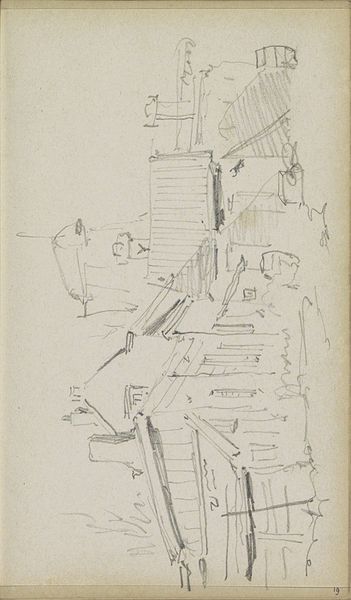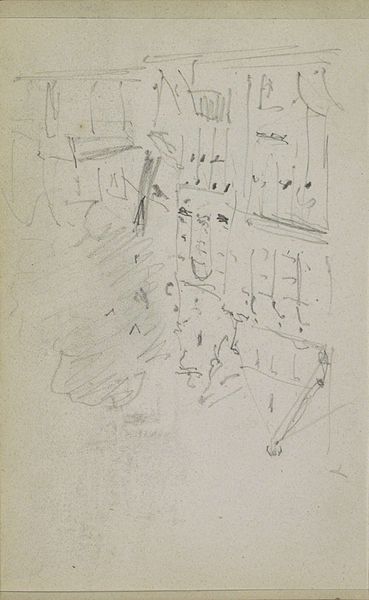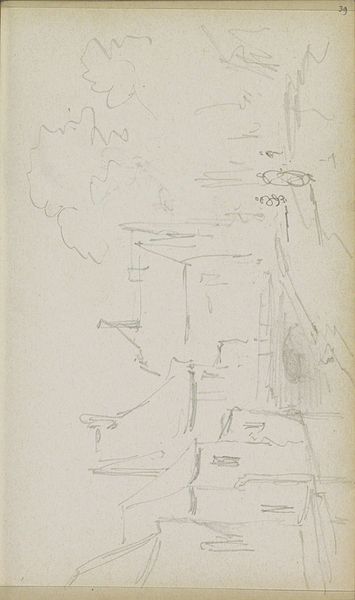
drawing, pencil
#
drawing
#
landscape
#
geometric
#
pencil
#
cityscape
#
street
#
realism
Copyright: Rijks Museum: Open Domain
Editor: So, here we have Adrianus Eversen's "Stadsgezicht," a cityscape done in pencil, likely sometime between 1828 and 1897. It has this ephemeral, almost dreamlike quality because of the medium and loose drawing style. What captures your attention in this work? Curator: What strikes me is how Eversen uses geometric shapes to define this urban space, giving a sense of order amidst the potential chaos of city life. Notice how the lines create a subtle, repetitive pattern, almost a symbolic code for the architectural landscape. Do you see any particular element repeating itself? Editor: I think I see the repeated rectangular shapes suggesting buildings and windows… It's like he is abstracting the essence of a city down to its simplest forms. Is that related to how we would experience cityscapes then versus how we do today? Curator: Precisely. The repetition emphasizes the cultural memory of home and community, reflected in the shared architectural styles. We can connect that to our primal need for shelter and belonging. The geometric abstraction creates a cultural shorthand, reminding us of familiar places and experiences through visual echoes. The implied presence of streets is also something universal that speaks of human interaction. Editor: I never considered how basic shapes could convey such a strong sense of place and human experience. The image really sticks with you differently after realizing it's about that. Curator: It makes you think about how we encode our environments with meaning, doesn't it? Eversen’s sketch shows us that even in a simple drawing, powerful cultural and psychological symbols are at play. Editor: Definitely. I'm leaving with a new appreciation for cityscapes, and seeing them not just as places, but symbols, too.
Comments
No comments
Be the first to comment and join the conversation on the ultimate creative platform.
